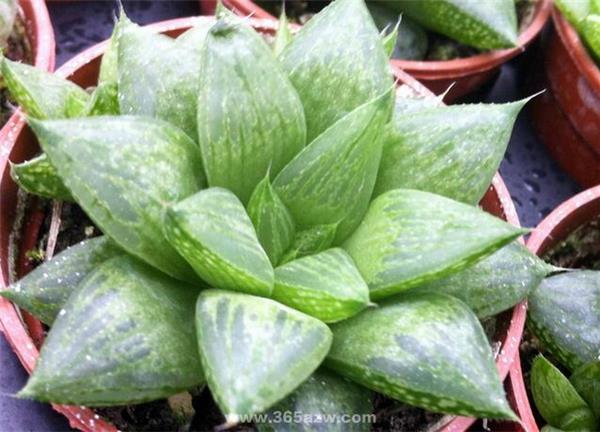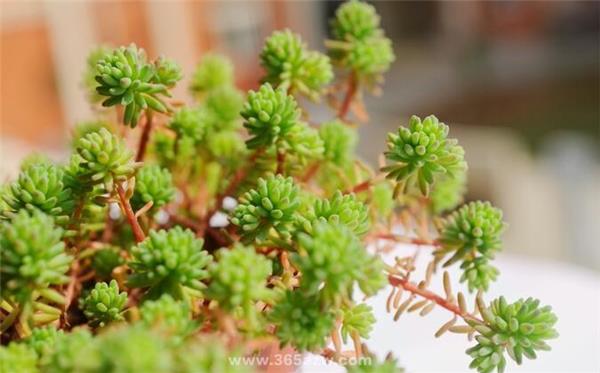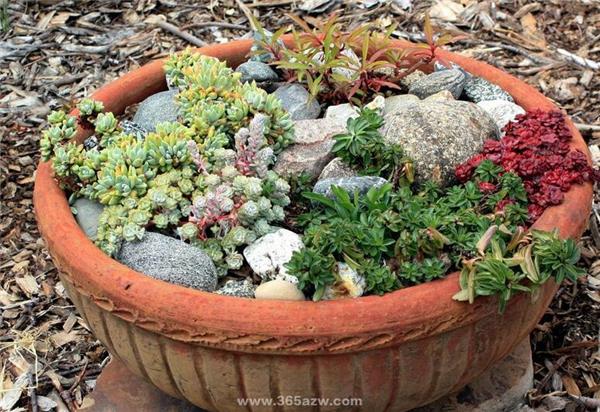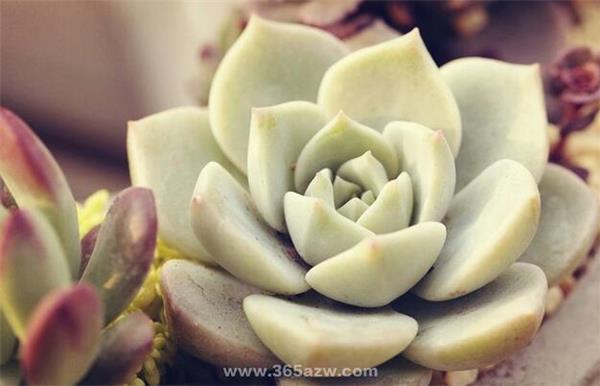How to raise succulent plants the way of planting succulent plants
Succulent plant is a kind of plant with full leaves, because of its strong reproductive ability and succulent flesh, it has high ornamental value. Many plant conservation enthusiasts choose to grow their own succulent plants, for some people who have not raised flowers and plants do not know where to start. Next, let's take a look at how succulent plants are raised.

According to statistics, there are more than 10000 species of succulent plants in the world, all of which originally lived in dry or salty places. However, with the development of high-tech technology, this kind of succulent food which can not be planted because of climate and geographical environment can be seen everywhere. No matter what kind of variety it is, either stem, leaf or root, there is always a part that is fat, thick and fleshy. Common succulent plants in the market also have a good-sounding name, such as Yulu, Mingyue, white peony, stone flower, rainbow jade, triangular glazed lotus and so on.
How to raise succulent plants-entry level for beginners
Junior enthusiasts can supply water according to the state of the plant and the dryness of the soil. the words are simple, and the specific operation is relatively fastidious. Sedum plants with normal growth can generally be observed through their leaves, if the soil surface is dry again, the leaves are also slightly wrinkled in the normal growth, showing that they are not energetic, so they can basically supply water at this time. This operation is still a little helpful for beginners who do not understand, if you are already familiar with the point, the water supply can be given basically with basin soil dry, and can be diluted with carbendazim and poured once a month. This can prevent the invasion of germs (this is the water supply for succulent plants with leaves in a healthy growth, that is, the water supply in the case of some junior enthusiasts directly bringing pots to buy home.

Reproduction of succulent plants:
1. Sowing: the advantage is that a large number of seedlings can be obtained at one time. In succulent plants, except for a few species that can self-pollinate, most of them belong to insect-pollinated or bird-pollinated flowers, which can only bear fruit by artificial pollination. The seeds of succulent plants have a short lifespan, such as Guangtang, which lasts only a few weeks. The seeds of general succulent plants are stored at room temperature for one year, and the germination rate decreases quickly. For this reason, many succulent plants are picked and sown after the seeds are ripe or stored for spring sowing in the following year. The sowing and germination time of different families and genera is also different, the early 2 days can germinate, the late 25 days will germinate.
2. Leaf cuttings: thick leaves are often placed on slightly moist sand beds or loose soil, which will soon take root, and adventitious buds will grow on the base of the leaves, forming small plants, such as Tianzhang, stone lotus, big leaves falling to the ground, and so on.

3. Stem cutting: in the process of succulent plant reproduction, pruning and shaping are combined, and branches are cut into cuttings, such as desert rose, purple dragon horn, tiger thorn plum, Caiyun Pavilion and so on. Desert roses, African overlord trees, green peaks, etc., which will flow white milk from the cut wounds, must be treated with Qianjing, and then cut in after a little drying, for better results.
4. Root insertion: the roots of the more valuable varieties of the 12-volume genus of Liliaceae are very sturdy and well-developed. the more mature fleshy roots are cut off and buried in the sand bed, and the upper part is slightly exposed to maintain a certain amount of moisture and bright light. new buds can sprout from the top of the root to form a complete plantlet.
5. Grafting: in succulent plants, grafting is often used to breed varieties under banded brocade and ornamentation. Such as Bawang whip as rootstock, grafting Chunfeng; horse tooth tree as rootstock, grafting elegant music dance; African overlord tree as rootstock, grafting African overlord tree decoration; big flower rhinoceros horn as rootstock, grafting purple dragon horn, etc., the ornamental effect is good. However, in the process of grafting, because the plant contains white emulsion, it is sticky. As a result, the grafting operation should strive to be fast and skilled in order to achieve success.
6. Ramet: ramet is the easiest and safest way to propagate succulent plants. As long as succulent plants with rosette foliage or community shape can be propagated through their sucking buds, walking stems, bulbs, tubers and plantlets, they can be reproduced when changing pots in spring. Of course, among the succulent plants, the varieties with spotted brocade, such as Phnom Penh tiger tail orchid, Wang Fei Lei Shenjin, never Night City brocade, green jade fan brocade and so on, must be propagated through branches in order to maintain the purity of their varieties.

The above is the introduction of how to raise succulent plants, which can be used as a reference.
The above is the introduction of how to raise succulent plants, which can be used as a reference.
Related
- Wuhan Hospital Iron Tree Blooming Result Was Instantly Frightened by the Gardener Master
- Which variety of camellia is the most fragrant and best? Which one do you like best?
- What is the small blue coat, the breeding methods and matters needing attention of the succulent plant
- Dormancy time and maintenance management of succulent plants during dormancy
- Minas succulent how to raise, Minas succulent plant pictures
- What are the varieties of winter succulent plants
- How to raise succulent plants in twelve rolls? let's take a look at some experience of breeding twelve rolls.
- Attention should be paid to water control for succulent plants during dormant period (winter and summer)
- Watering experience of twelve rolls of succulent plants
- Techniques for fertilizing succulent plants. An article will let you know how to fertilize succulent plants.



